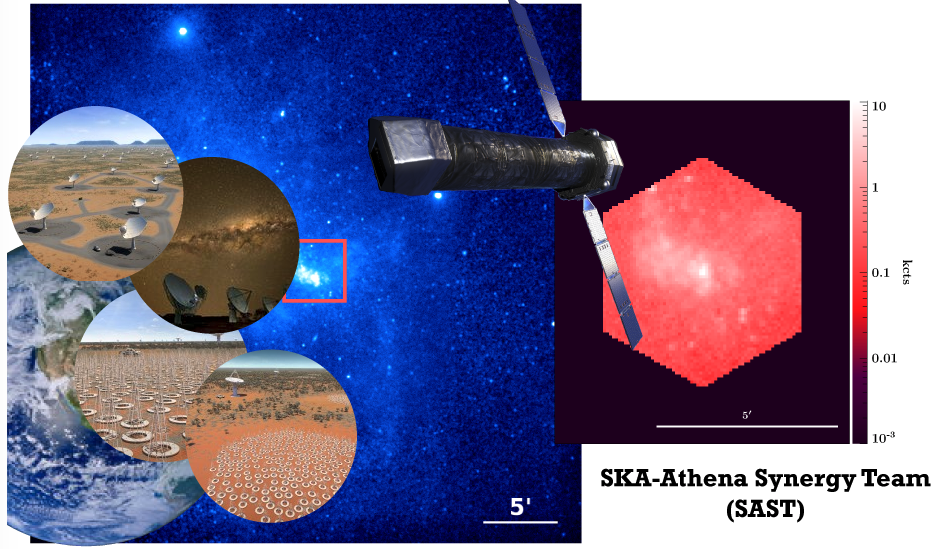
Athena (Advanced Telescope for High-Energy Astrophysics) is an X-ray telescope designed to address the two key questions in Astrophysics: (i) How ordinary matter assembles into the large-scale structure we see today and (ii) how black holes grow and evolve in the Universe. To answer the first question Athena will map the hot gas, specifically the gas in groups and clusters of galaxies as well as the intergalactic medium, to determine their properties and evolution. To answer the second question, Athena will detect the supermassive black holes (SMBH) in the centres of the galaxies, to study the inflows and outflows of matter and energy. Athena’s launch is scheduled in 2028.
The SKA Telescope (Square Kilometre Array) is the world’s largest radio telescope. The project is set to test the limits of human engineering and scientific endeavor over the next decade. The SKA aims to study the galaxy evolution, dark energy, the gravity of pulsars and black holes and the origin and evolution of cosmic magnetism, among others.
Now the Athena Science Study Team (ASST) and the SKA Organisation have agreed to identify and develop potential synergies between both large observatories. Combining data from the two facilities will result in a very exciting added value. A SKA-Athena Synergy Team (SAST) has been appointed to explore and develop all foreseeable scientific synergies that include galaxy clusters, AGN feedback and obscured AGN.
A dedicated Workshop organized by the SAST and hosted by the SKA Organisation headquarters in Jodrell Bank, UK was organized in 24th-25th April 2017. The identified synergies will be collected in a white paper that will be published in Fall 2017.
Source: Athena
